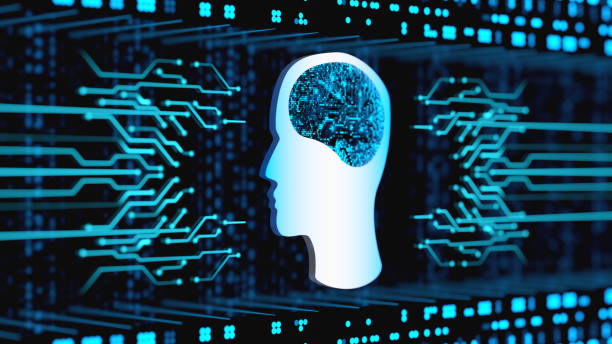What is an AI Robot? Definition, History, and Applications

In this section, we will explore the concept of #AI Robot.
An AI robot is, in fact, a combination of two distinct fields: #Robotics and #Artificial_Intelligence.
Robotics deals with the design, construction, operation, and application of robots, while artificial intelligence focuses on the development of intelligent computer systems capable of performing tasks that typically require human intelligence.
By integrating these two fields, AI robots create robots that can not only move and interact with the physical environment but also understand, learn, reason, and make decisions.
These robots can operate autonomously, solve problems, and adapt to new conditions.
The applications of AI robots are very extensive and include industries such as manufacturing, healthcare, agriculture, customer service, education, and even art and entertainment.
The history of this field dates back to the mid-20th century, but with recent advancements in machine learning and natural language processing, AI robotics has witnessed significant growth and development.
AI robots, leveraging complex algorithms, are capable of analyzing data and making intelligent decisions.
This capability distinguishes them from traditional robots that only operate according to pre-programmed instructions.
In other words, an AI robot can provide appropriate responses in unexpected situations and automatically optimize its tasks.
Are you dissatisfied with the low conversion rate of visitors to customers on your e-commerce site?
Solve this problem forever with professional e-commerce website design by Rasawep!
✅ Increase visitor-to-customer conversion rate
✅ Create an excellent user experience and build customer trust
⚡ Get free consultation
Main Components of an AI Robot
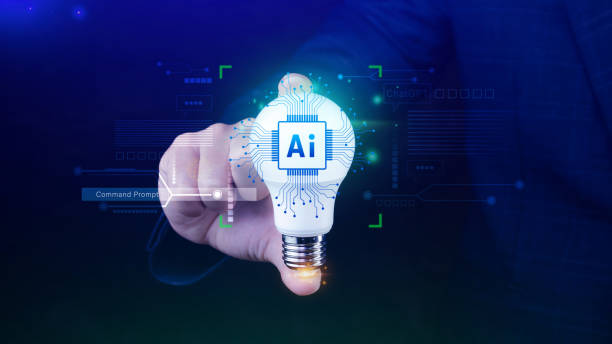
An AI robot consists of several key components that, by working together, enable its intelligent performance.
These components include:
- Sensors Sensors collect information from the surrounding environment.
This information can include images, sounds, temperature, pressure, etc.
Sensors help the robot understand its environment and react to its changes. - Processor The processor is responsible for processing information received from sensors.
Using AI algorithms, the processor analyzes information and makes necessary decisions.
The power of the processor directly impacts the speed and accuracy of the robot’s performance. - Actuators Actuators enable the robot to act in the physical environment.
Actuators can include motors, arms, wheels, and other mechanical components.
Actuators help the robot perform its tasks and interact with its surroundings. - AI Algorithms AI algorithms are the beating heart of the robot.
These algorithms help the robot learn, reason, make decisions, and adapt to new conditions.
There are various types of AI algorithms, each suitable for specific applications. - Power Source The power source supplies the necessary energy for the robot’s operation.
The power source can include batteries, solar cells, or connection to the power grid.
The lifespan and capacity of the power source significantly impact the robot’s operating time.
These components together form an integrated system that allows the AI robot to operate effectively in complex and dynamic environments.
For example, industrial robots used in production lines utilize vision sensors to detect defective parts, a processor to decide whether to remove or modify parts, and actuators to move and assemble parts.
Types of AI Robots: Exploring Applications and Differences

AI robots are designed and built in various types, each suitable for specific applications.
Some of the most common types of AI robots include:
- Industrial Robots These robots are used for repetitive and dangerous tasks in industrial environments.
Industrial robots can help increase productivity, reduce costs, and improve safety. - Service Robots These robots are designed to provide services to humans.
Service robots can be used in various fields such as cleaning, goods delivery, elderly care, and education. - Medical Robots These robots are used to assist doctors and surgeons in performing surgical operations, diagnosing diseases, and rehabilitating patients.
Medical robots can increase the precision and speed of surgical procedures and help improve treatment outcomes. - Military Robots These robots are used for dangerous and high-risk tasks on the battlefield.
Military robots can help gather information, defuse bombs, and transport equipment. - Space Robots These robots are used for space exploration and research.
Space robots can help collect soil samples, conduct scientific experiments, and repair satellites.
The main difference between these types of AI robots lies in the kind of tasks they are designed to perform.
Each type of robot uses specific sensors, processors, and actuators that are optimized for its intended tasks.
For example, industrial robots typically use powerful and precise arms for moving heavy parts, while service robots use advanced sensors for face and voice recognition to interact with humans.
| Type of Robot | Application | Key Features |
|---|---|---|
| Industrial | Performing repetitive tasks in industry | High precision, high power |
| Service | Providing services to humans | Human interaction, ability to move in crowded environments |
| Medical | Assisting doctors in diagnosis and treatment | Very high precision, ability to perform complex operations |
Machine Learning and its Role in the Development of AI Robots
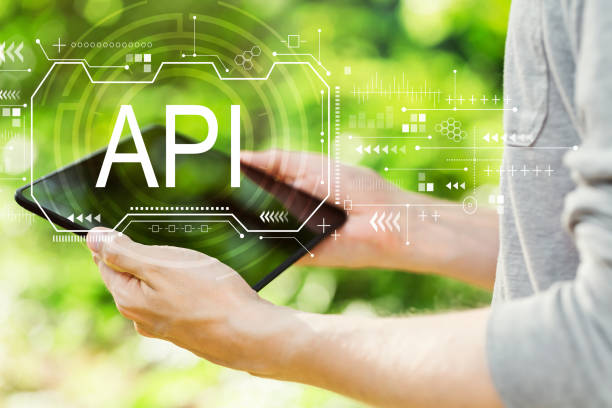
#Machine_Learning is one of the most important branches of artificial intelligence that plays a very significant role in the development of AI robots.
Machine learning enables robots to learn from data and improve their performance without explicit programming.
This capability allows robots to adapt to new conditions and perform tasks that were previously impossible.
Machine learning algorithms allow robots to discover hidden patterns and relationships by analyzing large volumes of data.
These patterns can be used for prediction, decision-making, and robot control.
For example, a robot can learn how to navigate an unknown environment or learn how to identify different objects using machine learning.
There are different types of machine learning algorithms, each suitable for specific applications.
Some of the most common algorithms include:
- Supervised Learning In this type of learning, the robot is trained using labeled data.
Labeled data includes the desired input and output.
By analyzing this data, the robot learns how to relate inputs to desired outputs. - Unsupervised Learning In this type of learning, the robot is trained using unlabeled data.
The robot must automatically discover hidden patterns and structures in the data. - Reinforcement Learning In this type of learning, the robot learns through trial and error.
The robot acts in a specific environment and receives a reward or penalty for each action.
The robot tries to optimize its performance by learning from these rewards and penalties.
The use of machine learning in AI robots has led to the creation of robots capable of performing complex and diverse tasks, including autonomous driving, face and voice recognition, and personalized services.
Are you worried about your e-commerce site’s low conversion rate and not achieving your desired sales?
Rasawep is your specialized solution for a successful e-commerce site.
✅ Significant increase in conversion rate and sales
✅ Professional and user-friendly design to gain customer satisfaction
⚡ Ready for a revolution in online sales? Get a free consultation!
Natural Language Processing (NLP) and its Role in Human-Robot Interaction
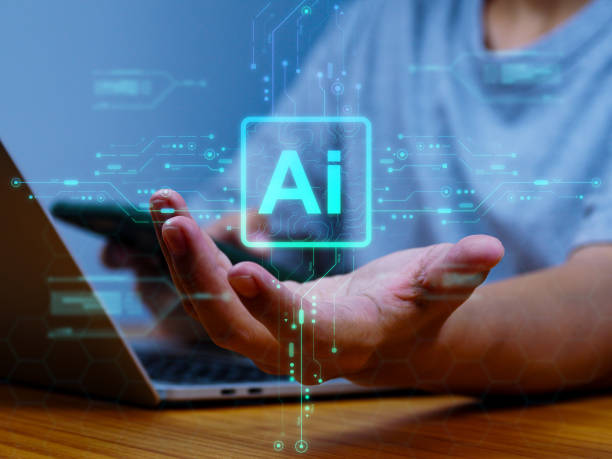
#Natural_Language_Processing (NLP) is another important branch of artificial intelligence that plays a very significant role in human-robot interaction.
NLP enables robots to understand, respond to, and communicate naturally with human language.
This capability allows robots to operate effectively in various fields such as customer service, education, and elderly care.
NLP includes a set of techniques and algorithms that allow robots to analyze human text and speech.
These techniques include word recognition, sentence structure analysis, understanding the meaning of words and sentences, and generating appropriate responses.
Using NLP, robots can:
- Answer human questions Robots can find and provide appropriate answers by analyzing human questions.
- Execute human commands Robots can perform desired tasks by understanding human commands.
- Converse naturally with humans Robots can converse with humans and exchange information using natural language.
For example, a robot can answer customer requests in a call center or help students learn new concepts using NLP.
Recent advancements in NLP have led to the creation of AI robots capable of understanding and responding to human language with very high accuracy, which allows for more natural and effective interactions between humans and machines.
Challenges and Limitations of AI Robots
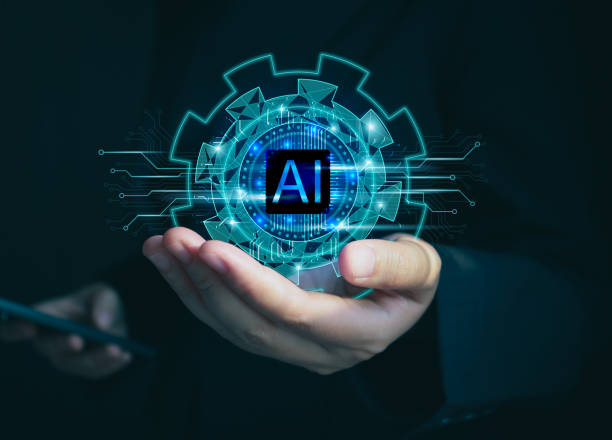
Despite significant advancements in the field of AI robotics, many challenges and limitations still exist that need to be addressed.
Some of the most important challenges include:
- High Cost The development and construction of AI robots are very costly.
Advanced sensors, powerful processors, and complex algorithms all contribute to the increased final cost of the robot. - Complexity The design and construction of AI robots are very complex tasks.
Expertise in various fields such as robotics, artificial intelligence, electronics, and mechanics is required. - Ethical Issues The use of AI robots can raise new ethical concerns.
For example, who is responsible for the robot’s decisions? How can the misuse of robots be prevented? - Security AI robots can be vulnerable to cyberattacks.
Hackers can take control of the robot and use it for malicious purposes. - Technical Limitations There are still many technical limitations in the field of AI robots.
For example, robots cannot yet fully understand human emotions or operate effectively in highly complex environments.
Overcoming these challenges and limitations requires the joint efforts of researchers, engineers, policymakers, and ethicists.
With the development of new technologies and the creation of appropriate legal and ethical frameworks, the full benefits of AI robots can be realized, and potential risks can be prevented.
Security issues related to AI robots are very important because these robots often work with sensitive data and can be connected to critical networks.
The Future of AI Robots: Predictions and Possibilities
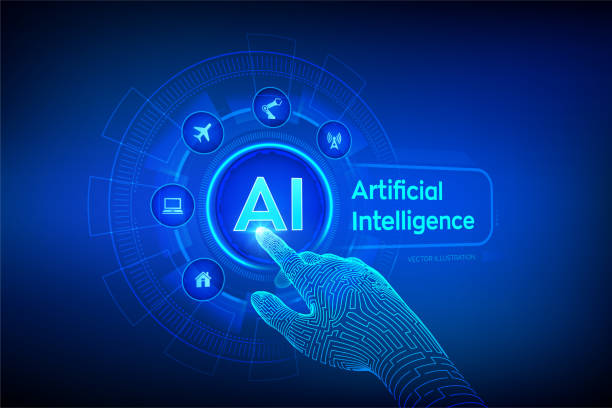
The future of AI robots looks very bright and promising.
With rapid advancements in artificial intelligence, robotics, and other related technologies, it is expected that smarter, more efficient, and more powerful robots will be developed in the near future.
Some predictions and possibilities regarding the future of AI robots include:
- Expansion of Robot Applications in Various Industries It is expected that robots will be more widely used in various industries such as manufacturing, healthcare, agriculture, customer service, and education.
- Development of Autonomous Robots It is expected that autonomous robots will become a reality in the near future.
These robots can be used in various fields such as transportation, goods delivery, and surveillance. - Creation of Collaborative Robots It is expected that collaborative robots will be more widely used in the future.
These robots can collaborate with humans in various work environments and help increase productivity and improve working conditions. - Development of Personal Robots It is expected that personal robots will become a reality in the near future.
These robots can assist humans with various household tasks, including cleaning, cooking, and caring for children and the elderly. - Integration of Robots with the Internet of Things It is expected that robots will be increasingly integrated with the Internet of Things (IoT).
This integration can lead to the creation of smarter and more efficient systems capable of collecting and analyzing data from their surroundings.
The future of AI robots is full of new opportunities and challenges.
By investing in research and development, creating appropriate legal and ethical frameworks, and training a skilled workforce, the full benefits of this technology can be realized, and a better future can be moved towards.
The Impact of AI Robots on Economy and Employment

AI robots can have profound effects on the economy and employment.
On the one hand, robots can help increase productivity, reduce costs, and improve the quality of products and services.
This can lead to economic growth and increased competitiveness for businesses.
On the other hand, robots can replace human labor, leading to job loss.
This can lead to increased economic inequality and social problems.
The impact of AI robots on employment depends on the type of jobs and the skills required.
Jobs that are repetitive, dangerous, and require low skills are more at risk of being replaced by robots.
Jobs that require creativity, critical thinking, communication skills, and social interaction are less at risk of being replaced by robots.
To counteract the negative effects of AI robots on employment, governments and organizations should take actions, including:
- Investing in Education and Training The skills required for future jobs should be taught to individuals.
- Creating New Job Opportunities New job opportunities should be created by supporting innovation and entrepreneurship.
- Supporting Vulnerable Workers Workers who lose their jobs should be supported and helped to learn new skills and find new employment.
- Fairer Wealth Distribution Wealth should be distributed more fairly through fiscal and social policies.
By adopting appropriate policies, the benefits of AI robots for economic growth and improved social welfare can be utilized, and their negative impacts on employment can be prevented.
Do you know that a weak corporate website loses you many opportunities daily? Solve this problem forever with professional corporate website design by Rasawep!
✅ Create a powerful and reliable image for your brand
✅ Attract new target customers and increase sales
⚡ [Get Free Website Design Consultation]
AI Robots in Iran: Opportunities and Challenges

Iran, like other countries worldwide, faces opportunities and challenges related to AI robots.
Iran has high potential for the development and use of AI robots in various fields such as industry, agriculture, healthcare, and services.
However, many challenges also exist in this area, including:
- Lack of Investment Investment in research and development of AI robots in Iran is insufficient.
- Shortage of Skilled Workforce There is a shortage of skilled labor in the field of AI robots in Iran.
- Technological Limitations Access to advanced technologies in AI robots in Iran is limited.
- Legal and Regulatory Barriers Many legal and regulatory barriers exist for the development and use of AI robots in Iran.
To benefit from the opportunities of AI robots and overcome the challenges, the government and the private sector should take actions, including:
- Increasing Investment in R&D Investment in research and development of AI robots should be increased.
- Developing a Skilled Workforce Educational and training programs should be developed to train a skilled workforce in AI robots.
- Facilitating Access to Technology Access to advanced technologies in AI robots should be facilitated.
- Reforming Laws and Regulations Laws and regulations that hinder the development and use of AI robots should be reformed.
By adopting appropriate policies, Iran can utilize the benefits of AI robots for economic development and improved social welfare.
The development of AI robots in Iran can help solve specific national problems, such as improving agricultural productivity and developing advanced industries.
Important Tips for Choosing and Using AI Robots

Choosing and using an AI robot is an important decision that should be made carefully and thoughtfully.
Before choosing and using an AI robot, the following points should be considered:
- Define Needs and Goals First, you need to accurately define your needs and goals.
What tasks do you want the robot to perform? What results do you expect? - Research and Review You should research and review the different types of AI robots available in the market.
Which robot is most suitable for your needs? - Compare Prices and Features You should compare the prices and features of different robots.
Which robot offers the best value for your money? - Check Manufacturer’s Reputation and History You should check the reputation and history of the robot manufacturer.
Is it a reputable manufacturer? Does it have a good track record in providing quality products? - Consult with Experts You should consult with experts in the field of AI robots.
They can help you choose the right robot and how to use it. - Test and Evaluate Before making a final purchase, you should test and evaluate the robot.
Does the robot work correctly? Does it provide the desired results? - Training and Support You should receive training and support from the robot manufacturer.
How can the robot be used correctly? What should be done if a problem occurs?
| Tip | Description |
|---|---|
| Define Needs | Accurately specifying the desired tasks and goals for the robot |
| Research and Review | Searching and comparing different types of robots |
| Consult with Experts | Receiving guidance from specialists in robotics |
By following these tips, you can choose the right AI robot and use it effectively.
Frequently Asked Questions
| Row | Question | Answer |
|---|---|---|
| 1 | What is an AI robot? | An AI robot is a machine capable of understanding, reasoning, learning, and problem-solving, and can perform complex tasks with relative autonomy. |
| 2 | What are the most important applications of AI robots? | Main applications include industrial manufacturing, customer services (chatbots), medicine and surgery, autonomous transportation, space exploration, and military affairs. |
| 3 | What is the main difference between an AI robot and a regular robot? | A regular robot only follows programmed instructions, while an AI robot can learn from data, make decisions, and adapt itself to new environments. |
| 4 | How do AI robots learn? | They learn through machine learning algorithms (such as deep learning, reinforcement learning) and by processing vast amounts of data, identifying patterns, and improving their performance. |
| 5 | Can AI robots have emotions? | Currently, AI robots do not possess real emotions in the human sense. They can mimic or detect emotions, but they do not understand or experience them. |
| 6 | What are the current limitations of AI robots? | Limitations include the need for large amounts of data, inability to grasp abstract concepts, lack of true creativity, ethical issues, and challenges in generalization to new environments. |
| 7 | What is the role of AI in the development of humanoid robots? | AI helps humanoid robots to walk, maintain balance, understand their surroundings, interact with humans, and perform complex tasks. |
| 8 | How is the future of AI robots predicted? | It is predicted that AI robots will become smarter, more autonomous, and capable of performing more complex tasks in daily life and industry, and their interaction with humans will increase. |
| 9 | Can AI robots replace all human jobs? | It is unlikely that all human jobs will be replaced. Robots will take over many repetitive and dangerous tasks, but jobs requiring creativity, empathy, and ethical judgment will remain. |
| 10 | What ethical and social challenges arise with the expansion of AI robots? | Challenges include issues related to privacy, data security, ethical decision-making by robots, impact on employment, and accountability in case of errors. |
And other services of RasaWeb advertising agency in the field of advertising
- Smart Conversion Rate Optimization: A creative platform for improving click-through rates with custom programming.
- Smart Direct Marketing: A dedicated service for growing user engagement based on key page optimization.
- Smart Social Media: Revolutionize online growth with customized user experience.
- Smart Advertising Campaign: Transform customer acquisition with key page optimization.
- Smart Brand Identity: A dedicated service for increasing click-through rates based on attractive UI design.
And over hundreds of other services in the field of internet advertising, advertising consultation, and organizational solutions
Internet Advertising | Advertising Strategy | Advertorials
References
How Smart Robots Are Changing the World
What is Artificial Intelligence; Its Types and Applications
Smart Robots in Agriculture
Amazing Applications of Artificial Intelligence in Everyday Life
? Are you ready to revolutionize your business in the digital world? With Rasawep Afarin Digital Marketing Agency, from SEO strategies to professional WordPress website design, achieve the best results and build a bright future for your brand.
📍 Tehran, Mirdamad Street, next to Bank Markazi, Southern Kazeroun Alley, Ramin Alley, No. 6

